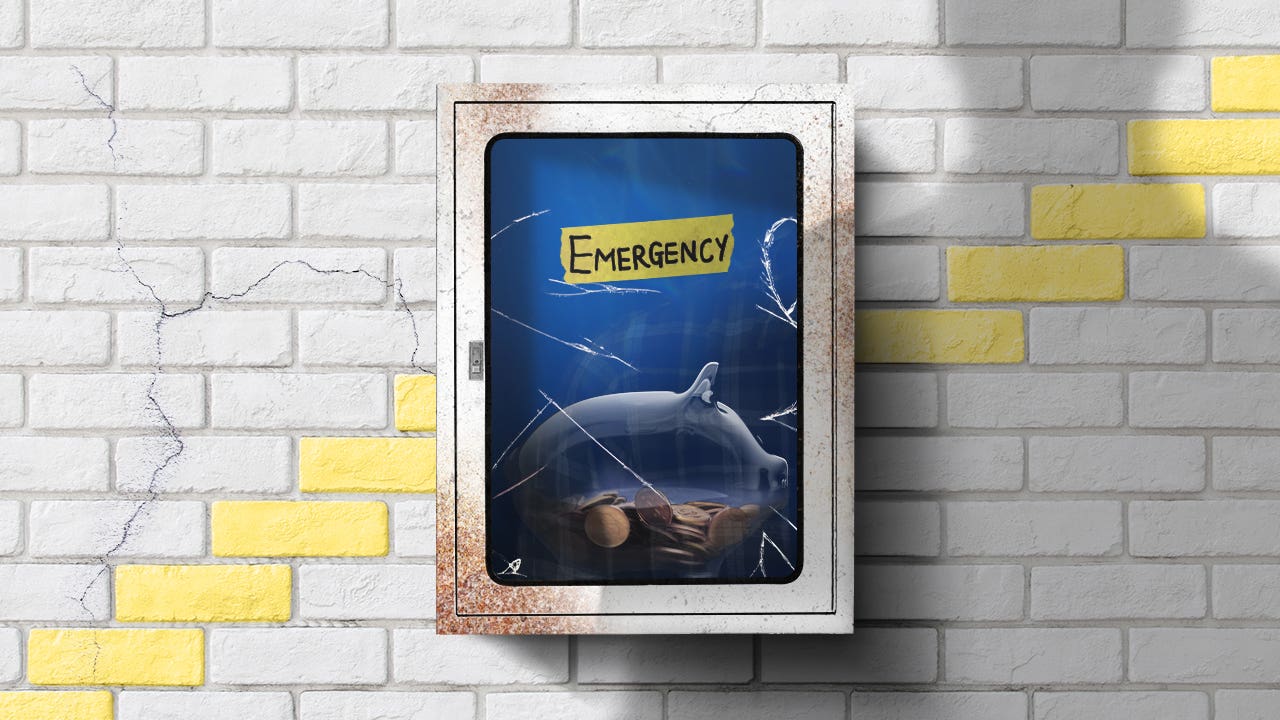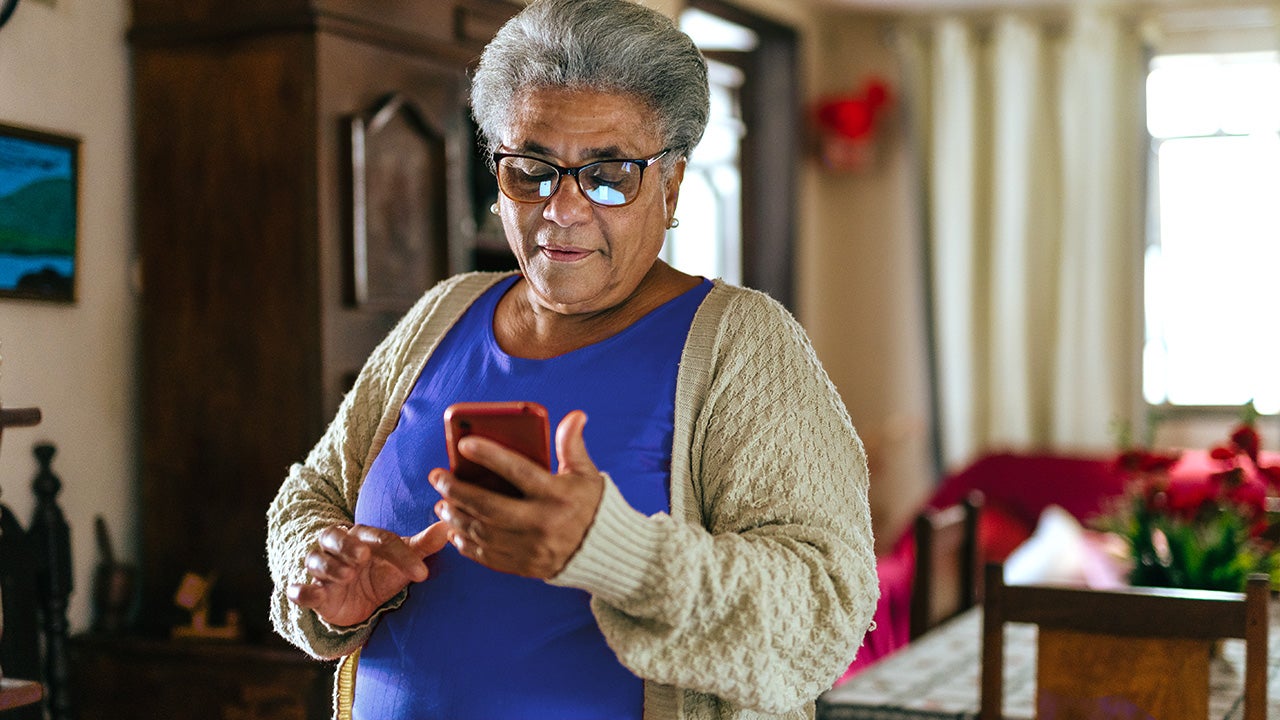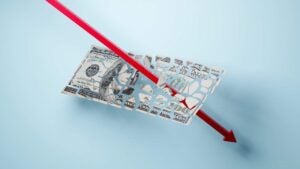Inflation is crushing Americans’ savings — here’s 6 tips to protect your money

Building up a stable cushion of cash you can rely on in emergencies seems daunting even in normal economic times. Add the steepest loss of Americans’ purchasing power in more than 40 years into the mix, and the task can seem next to impossible.
Prices have climbed on almost every consumer staple, rising 8.3 percent in August from a year ago — among levels not seen since late 1981. Everyday Americans thus have to make sacrifices with their money to make ends meet. Almost 3 in 5 (58 percent) said in a February Bankrate poll they had to cut back on spending because household items have gotten so expensive. Another 29 percent said they’ve had to dip into their savings, while 23 percent have had to take on credit card debt.
Skyrocketing costs can cause a major hit to one’s financial security. More than half (58 percent) of adults in a June Bankrate poll said they were concerned about the amount they have in emergency savings, up from 48 percent in 2021 and 44 percent in 2020. But some Americans are in a better position to handle inflation than others. Roughly, 4 in 10 (or 44 percent) have enough savings to cover an unplanned expense of $1,000, a vital fund in the face of higher prices, according to a Bankrate survey.
“Inflation raises prices and lowers purchasing power,” says Gabe Krajicek, CEO of Kasasa, an online financial services company. “Each one is being stretched further to cover daily needs, so there is less left over to contribute to savings.”
Making matters worse, the hunt for the best place to park your cash is a challenging one, with the average savings yield a modest 0.13 percent, according to Bankrate data.
Policymakers are already on a quest to cool inflation, especially at the Federal Reserve, where officials have been lifting the price of borrowing money to cool price pressures at the fastest pace in 40 years. But it comes with a price, slowing down the labor market and putting the U.S. economy at risk of a recession. Periods of high inflation also make saving for those rainy days harder, though even more so one of the most important financial steps a consumer can take.
“Having liquid funds available to you is always a good idea just because there’s going to be that emergency that arises,” says Kia McCallister-Young, director of America Saves, a nonprofit working in conjunction with the Consumer Federation of America. “It’s not an ‘if’ it’s going to rise — it’s a ‘when’ it’s going to rise.”
To help, Bankrate is here to walk you through crucial tips to both grow and preserve your emergency fund in the face of 40-year-high inflation, including offering insight on who might want to take careful consideration the most.
Sources: Federal Reserve, Bureau of Labor Statistics, Federal Reserve Bank of Atlanta and Bankrate
Tips on how to build an emergency fund
1. Find the best place to park your cash
Even though the average savings yield is a modest 0.13 percent, it’s not something you have to accept. High inflation underscores the importance of finding the best place to park your cash, so your money can work for you.
One avenue can be opening a savings account at an online bank, which can pay a more competitive yield because it has fewer overhead costs to pay than a traditional bank with branches. Some of the highest-yielding online banks are offering a 2 percent annual percentage yields (APYs) or higher, almost 16 times the national average.
But be careful: Never sacrifice yield for liquidity, especially considering the funds you’re stashing away would be your lifeline when facing unexpected expenses.
“The primary objective of cash is to have liquidity, and yield often takes a backseat,” says Greg McBride, CFA, Bankrate chief financial analyst. “The vast majority of American households need more liquidity, not less.”
2. Those with no savings: Start small — it’s more about forming the habit of savings
Experts typically recommend having a stockpile of cash worth six months of your expenses, making it a common North Star for many consumers. But that can seem like a daunting task for almost 1 in 4 Americans, who said in Bankrate’s June poll they had no emergency savings at all.
For individuals with no savings, the goal might be getting in the habit of savings, even if it’s starting as small as putting aside $5 a week, McCallister-Young says.
The best thing to do for people with no savings is to get into the mindset and commit to starting to build that cushion.
“Don’t put too much stress on yourself to try to save up three to six months,” she says. “The focus is to get on the habit of savings, and that’s going to look different for everyone.”
3. Those who already have some savings: Assess your spending habits to contribute more to your emergency fund
Individuals who already have some amount of money in their emergency fund want to find ways to keep growing it. That might come down to evaluating your expenses and seeing where you can free up some cash. Chipping away at the costliest lines in your budget will go a long way, such as finding roommates and cheaper housing, but those options might not be possible for all people.
McCallister-Young would rather call it a “spending and savings plan.” That’s because it’s a two-way street.
“Maybe right now, you’ve been putting $100 aside, and you might have to adjust that and bring it down a little because your money isn’t going as far,” she says. “Just see if you can tip the scales in your favor and be very specific and intentional.”
4. Make it as easy as possible to save
For those with regular income, it’s even easier to make saving a habit when the process is on autopilot. See if you set cash aside automatically, either by automatically deducting it from your paycheck or automating your transfers throughout the month.
“There will always be something that will be a headwind to your ability to save,” says Christine Benz, director of personal finance at Morningstar. “You can override those automated savings contributions if you need to, but I do think it helps enforce discipline in the savings process similar to the way we see 401(k) participants rarely tend to change their contribution rate once they set it.”
5. Build additional income
Seeking out extra income streams could also help you safeguard your finances as prices climb higher. See if there are any easy opportunities to make more money, such as selling clothes or monetizing your hobbies. If you have internet access, you might also be able to partake in the gig economy as a side hustle.
“There’s more opportunity than ever to get creative and find ways to add income,” McCallister-Young says.
6. Change your saving mindset
The best way to make saving a habit, even when it’s difficult, is changing the way you think about it. A cushion of cash doesn’t just prevent you from having to put an unplanned expense on a credit card with a double-digit interest rate, but it could also be what helps you take a last-minute vacation or meal out with friends. It also might be the sleep-well-at-night fund that helps you feel less stuck when the economy is uncertain and your job security is low.
“Savings gives you freedom to choose rather than the feeling of being stuck in a situation because you rely on a paycheck,” Krajicek says. “Rather than focusing on dollars and cents, remind yourself of the reason behind the action.”
Who’s hit hardest by inflation? Low-income earners, those with no savings, indebted Americans and more
Everyone is not equally equipped to pad up their emergency fund in times like these.
Virtually all Americans are feeling the impact of inflation, with nearly 93 percent in Bankrate’s inflation poll saying they’ve noticed higher prices over the past year. Part of that’s because inflation is impacting everyday essentials most, with groceries alone rising by the fastest pace since March 1979.
Yet, it highlights a basic tenet about inflation: How much you experience depends on what you buy. If you spend a larger portion of your income on inflated items, you’re likely going to feel the hit of price pressures more than someone who doesn’t. And all Americans have different spending patterns, depending on their:
- Individual financial situation
- Income
- Residence
- Race
- Age
- Housing situation
Some inflation can be good. A low and stable amount helps the economy keep growing, businesses keep hiring and consumers keep spending. Asset inflation on stock or home prices, meanwhile, can flow back into the pocketbooks of the consumers who own them. Too much inflation at a rapid rate can be a recipe for disaster. Businesses might have to cut costs or hiring plans, while consumers might start to pull back on spending, feeling poorly about their overall financial situation.
Inflation by income
Generally speaking, lower-income households are found to have higher inflation rates over time than their upper-income counterparts, according to research from the Department of Labor. That’s because they might tend to spend more of their money on inflated items, such as the day-to-day necessities of groceries and gas, and rent rather than own.
Meanwhile, an analysis from the Penn Wharton Budget model found that low- and middle-income households’ expenses increased by about 7 percent in 2021, while the country’s top earners saw their expenses rise by 6 percent.
A separate analysis from TD Economics found middle-income earners are experiencing slightly higher rates of inflation than the lowest and highest earners, with the data showing:
- Lowest 20 percent: 8 percent
- Second 20 percent: 8.2 percent
- Third 20 percent: 8.6 percent
- Fourth 20 percent: 8.6 percent
- Highest 20 percent: 8.3 percent
Yet, the note also estimates 84 percent of spending among the lowest 40 percent of income earners is spent on energy, transportation, shelter and food — some of the most expensive items — versus 32 percent for the highest income quintile.
Individuals making less than $50,000 (at 37 percent) were disproportionately more likely than those earning $100,000 or more (at 22 percent) to say inflation has very negatively impacted their personal finances in Bankrate’s February poll.
Inflation by race
Meanwhile, Black and Hispanic Americans have seen their personal inflation rates rise faster than that of White and Asian Americans since 2021, and those disparities are more than twice as large as they were in 2019, according to an analysis from the New York Fed. The report found Black and Hispanic Americans see an extra 0.2-0.6 percentage points of inflation, though it could be higher.
Inflation by region
Individuals also see a higher cost-of-living depending on where they live.
Annual inflation by region, as of July:
- Northeast: 7.3 percent
- Midwest: 8.6 percent
- South: 9.4 percent
- West: 8.3 percent
Inflation by age
Throughout history, Americans ages 62 and up have tended to experience higher inflation rates than other Americans because they spend more on health care and shelter — though it’s changing with today’s broad-based inflation.
Yet, inflation at a 40-year high means many Americans haven’t ever experienced price pressures like this before.
Inflation by financial situation
And those who have no savings to buffer the blow of higher prices and credit card debt tend to feel worse financial strain than those who have a healthy level of cash stashed away. Just over half of Americans (53 percent) have more emergency savings than credit card debt, according to a separate February survey from Bankrate.
“People with no savings are feeling inflation very hard right now: They have no cushion and no support,” McCallister-Young says. “The best thing to do for people with no savings is to get into the mindset and commit to starting to build that cushion.”
Inflation FAQ
-
Inflation occurs when the cost of goods and services in the economy goes up over a sustained period of time. Health care and college tuition are common examples, but in the aftermath of the coronavirus pandemic, prices also soared for a sustained period on gas, food and energy.
-
No one cause is to blame for inflation’s surge after the coronavirus pandemic. Consumer demand for the activities they were deprived of during lockdowns sent the cost of hotels, travel and airline tickets soaring. Supply shocks abroad and an energy crisis from the Russia-Ukraine conflict and China lockdowns have only exacerbated the crisis. All the while, the federal government spent nearly $5 trillion in keeping the economy afloat, while the Federal Reserve cut interest rates to near-zero and ballooned the money supply with a bond-buying plan. Corporate profits also surged at the widest margin since 1950. All of these factors likely contributed to 2022’s red-hot inflation.
-
Why we ask for feedback Your feedback helps us improve our content and services. It takes less than a minute to complete.
Your responses are anonymous and will only be used for improving our website.
You may also like

How to save money during inflation: 6 Tips and Strategies





